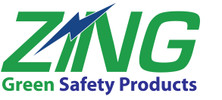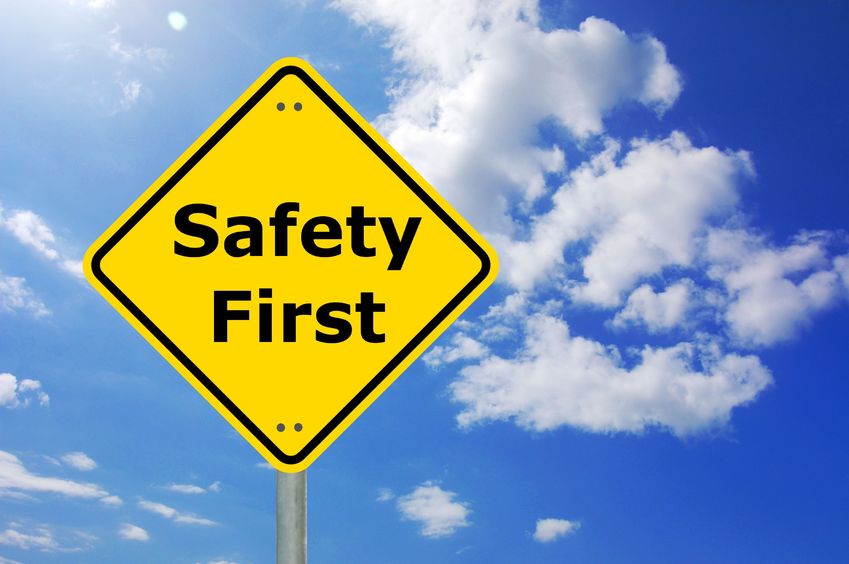Find the Right Safety Signs for Your Workplace
Jun 16th 2016
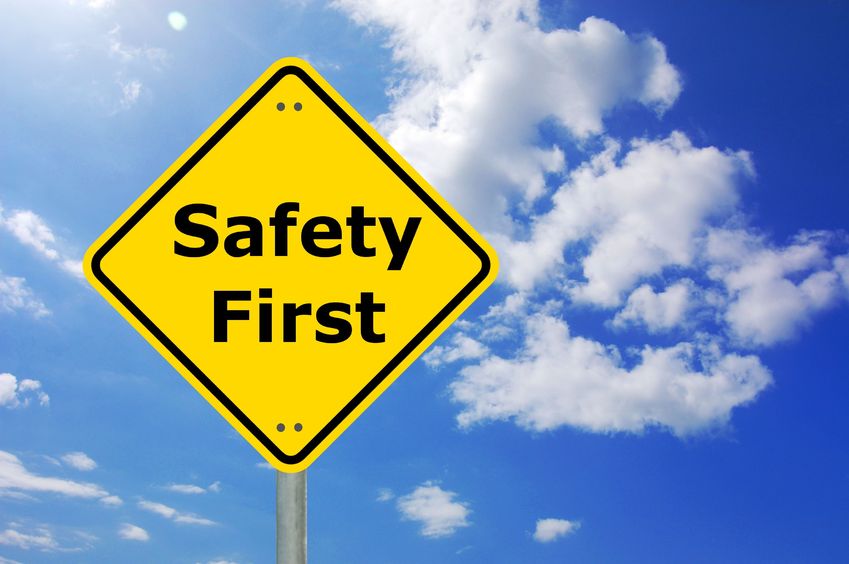
Signs are an indispensable part of workplace safety. This helpful guide will help you find the signs that are right for you. We will consider the material of signs, compliance and safety requirements, and a few tips to help you maximize safety and minimize costs.
Material
Safety signs are available in a wide variety of materials. The most common are aluminum, plastic, and adhesive. Each of these options can make an excellent choice—it all depends upon what you need. The following overview will give you a brief description of each sign type and its application.
Aluminum Signs
- Excellent for outdoor use. If being used for traffic or parking applications, reflective sheeting is required.
- Aluminum signs are very durable. Aluminum signs can be expected to maintain peak performance for 5-10 years, depending on workplace conditions.
- Lightweight, strong, and does not rust.
Plastic Signs
- Works well for indoor and select outdoor applications.
- Polyethylene and polypropylene, two of the most common plastics used for signage, are weather-resistant, chemical-resistant, and will not crack or peel.
- Maintain peak performance for 5-10 years.
Adhesive
- Saves space, and can be directly mounted to hard surfaces.
- Ideal for glass doors or windows.
- Maintain peak performance for 2-5 years.
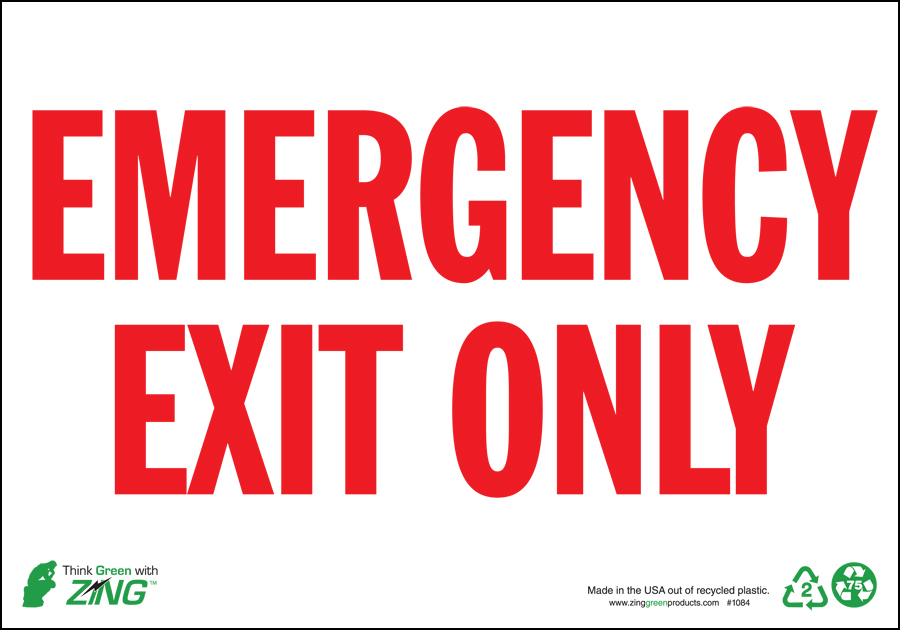


Choosing the proper material for your signs will impact performance.
Compliance
Safety signs remain one of the most important ways to create a safe workplace. OSHA standard 1926 G details the cases in which signs are required. This section will provide a brief overview of OSHA’s requirements. Readers are encouraged to read the whole standard here.
OSHA divides safety signs into three main categories: Danger signs, Caution signs, and Safety Instruction signs.
Danger Signs
- Must be used where immediate danger is present.
- Red, black, and white colors are required.
Caution Signs
- Must be used where potential dangers or hazards are present.
- Yellow and black colors are required.
Safety Instruction Signs
- Must be used where safety instructions are necessary.
- Green, white, and black colors are required.
Maximizing Safety
The aforementioned rules can be seen as an excellent starting point for your workplace. In addition to the required signs outlined above, several other signs can help you maximize safety and avoid serious workplace accidents. This section will outline some of the most popular and effective options: projecting signs, posters, and facility policy signs.
Projecting Signs
Projecting signs can often be a best safety practice. Projecting signs offer more visibility than traditional, flat signs. They can be seen from several angles and can emphasize important locations at a distance. Exits, weather shelters, AEDs, fire extinguishers, and fire alarms are just some of locations that can benefit from projecting signs.
Projecting signs come in a variety of forms. The most common among these are “L,” “V,” and three sided signs. There are advantages to each. L Signs generally take up less mounting space, and V signs offer slightly more visibility. Three-sided signs offer the most visibility of all, and are an excellent way to emphasize your most important locations.
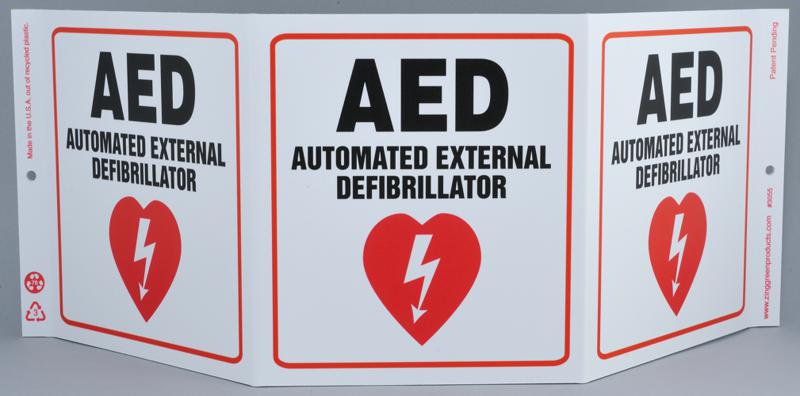
Three-sided signs offer maximum visibility.
Posters
Posters are an easy, visually intuitive way to keep your workforce informed. Posters can be used to inform employees about Lockout/Tagout processes, GHS/HazCom procedures, or general best safety practices. Having posters placed throughout your workplace can emphasize your commitment to safety and help instill a “safety-first” mentality in your workforce.
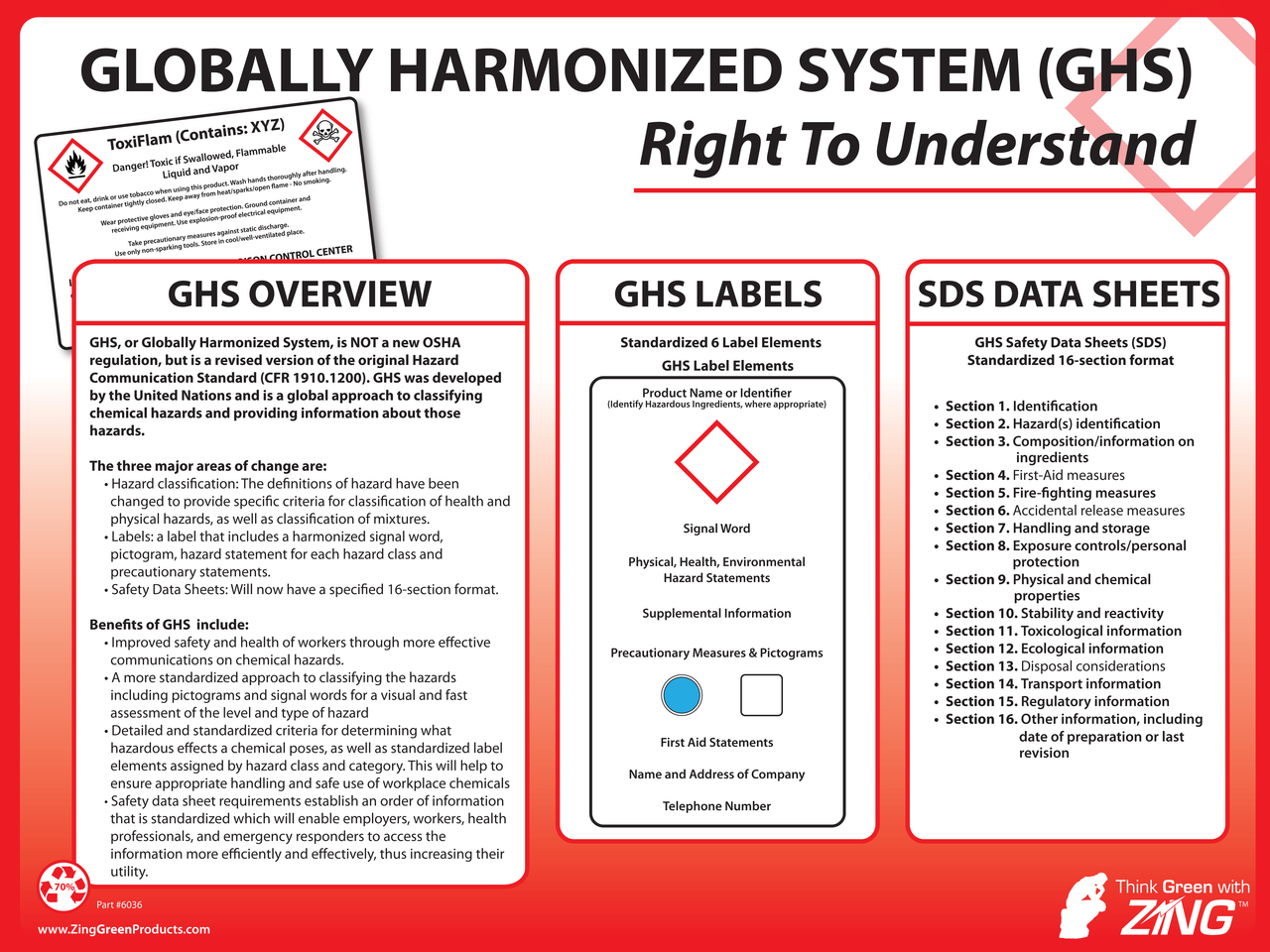
Posters clearly convey important safety information.
Facility Identification and Policy Signs
Facility Identification and Policy signs are a good way to inform employees and visitors of important safety locations and policies. Handwashing signs, caution signs, and notice signs can help prevent the spread of illness and accidents.
Go Green, Save Money
Signage can also help your company adopt more efficient and sustainable operations. Energy conservation and recycling signs can help your company save on energy, supply, and waste costs. Light switches, printers, and water faucets, for instance, are often used wastefully. A few well-placed signs can help eliminate unnecessary waste, and help save on costs.

Facility signs can encourage cost-saving behavior.
